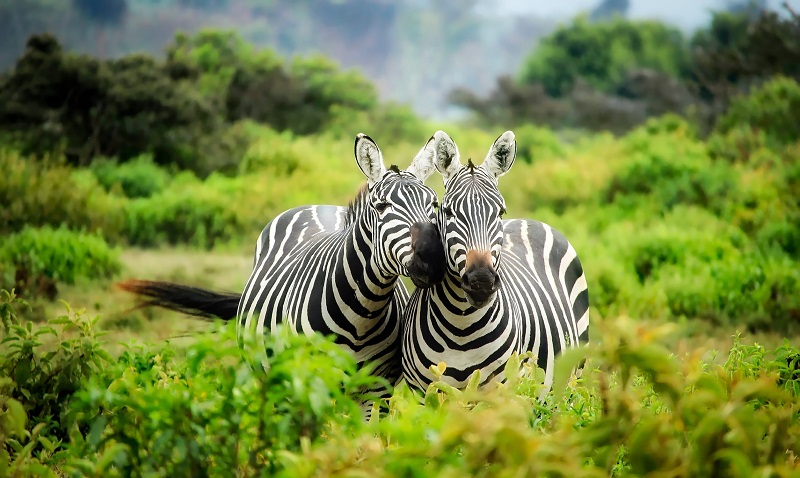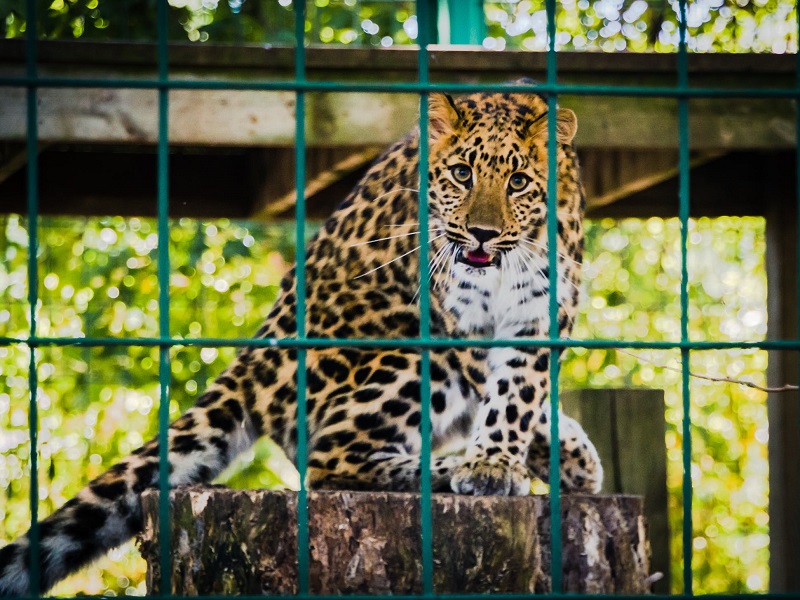via ARTiculations: Do you struggle with talking to children about art? Well – there are definitely challenges but talking to kids about art can also be a really fun and educational experience for everyone. And once you get the hang of it, it’s easy!
Via Better Homes & Gardens: With all the time spent watching television and playing video games, many of today’s children have never experienced the rewards of a hobby.
Not long ago, speaking to a large midwestern audience, I asked, “How many of you, when you were children, had a hobby?” Nearly everyone raised a hand. I then asked them to keep their hands in the air if at least one of their children had a hobby, which I distinguished from organized, adult-directed, after-school activities such as Little League. Most of the hands went down.
Thirty-odd years ago, almost every kid in my neighborhood had some sort of hobby. Collecting and trading baseball cards was a popular pastime (one that’s making a strong comeback today), as were coin and stamp collecting. One of my friends was into photography (he’s now a photographer), another was into building radios (he’s now an electrical engineer).
Hobbies benefit children in numerous ways. Because they are expressions of personal accomplishment and a means of self-discovery, hobbies help build self-esteem.
Hobbies are educational tools, as well. For example, a child who becomes interested in rocketry — one of the most popular hobbies, by the way — learns about propulsion and aerodynamics. By working on hobbies, children learn to set goals, make decisions, and solve all sorts of problems. Finally, hobbies often mature into lifelong interests, even careers.
How to Find a Hobby for Your Child
If all of that sounds good, and you’d like to help your child develop and sustain a hobby interest, try these suggestions:
Set a good example. Scott Harris, a hobby shop buyer and hobby workshop leader in Gastonia, North Carolina, finds that children with hobbies tend to have parents with hobbies.
Be prepared to sacrifice space. Your child will need work space for his or her hobby projects. Designate a particular room, a corner of the basement, part of the garage, or similar area. Regardless of where you set up the space, your child should be able to walk away from the hobby and come back to it later. The work space should also allow for plenty of paint spills, scratches, and other hobby-related accidents — the inevitable by-products of creative activity.
Provide some guidance. “Nothing will kill a child’s enthusiasm for a hobby quicker than lots of frustration during the learning stage,” cautions hobby expert Harris. Help your child get off to a good start by demonstrating how to closely follow a set of directions, and how to handle sometimes-delicate hobby materials with proper care.
Limit television watching. Since 1955, when it became a fixture in America’s households, television has come to dominate the spare time of the American child. By age 15, the average child has spent more time watching television than sitting in a classroom. Let’s face it, it’s impossible to work on a hobby and watch TV (or play video games) at the same time.
For want of spare time, a hobby may never develop. But find a hobby, and a talent may be born, a life enriched.
via firstcryparenting: A woman’s diet during pregnancy is of utmost importance as it not only gives energy to the mother but also the baby. As it is the only source of nourishment for the growing foetus, the diet of a woman needs to be well balanced. Care should be taken to include only those items that will not harm the mother and the baby.
Is Eating Spicy Food Safe During Pregnancy
Spicy food does not affect the baby or the pregnancy. However, consuming more spicy food than what your body can bear, creates digestion, acidity and heartburn related problems.
Spicy Food During First Trimester
Consuming spicy food in the first trimester is safe and does not affect the development of the baby. The risk of early pregnancy loss is high in the first trimester, and this worries expecting mothers about side effects of consuming spicy food.
Spicy Food During Second & Third Trimester
Consumption of spicy food during second & third trimester increases the chances of experiencing heartburn and acid reflux. In the third trimester, the growing foetus causes stomach acids to revert to the oesophagus and eating spicy foods could aggravate this condition.
How Much Of Spicy Is Good?
As long as your body can digest all those spices, it is safe to consume spicy food in limited quantities. Avoid eating spicy food outside. Instead, buy fresh spices and grind these spices at home.
What Are The Risks & Side Effects Of Eating Spicy Food?
Eating spicy food can cause digestion problems leading to discomfort in a pregnant woman. Listed below are the risks and side effects of eating spicy food during pregnancy:
- Morning Sickness: Morning sickness is very common in the early stages of pregnancy due to changing hormonal levels. Morning sickness can be aggravated by consumption of spicy food.
- Heartburn: The chances of experiencing heartburn and other digestive issues are high when you are pregnant. Spicy food will increase acid reflux and aggravate heartburn, especially in the late months of pregnancy.
If you decide to eat spicy food, pair it with a glass of milk to minimize heartburn. Honey can also help to prevent heartburn after eating a spicy dish.
Myths About Eating Spicy Food When Pregnant
There are myths attached to eating spicy food during pregnancy. Myths without any scientific backing include:
- Spicy food can have an adverse impact on your baby is a myth.
- Another myth regarding consumption of spicy food is that it can lead to pre-term labour.
- Consumption of spicy foods during pregnancy can lead to miscarriage and congenital disabilities are yet another myth without any scientific proof.
Alternatives To Spicy Foods
You can try different cuisines and dishes which are naturally spicy and tangy. Limit consumption of spicy food to moderate levels to avoid heartburn and digestion problems.
- Limit spicy dish to one per meal and change your cuisine if spicy Indian cuisine gives you heartburn.
- Thai and Mexican cuisines have spice in the form of jalapenos, chilli flakes and oregano which are much milder than spice in Indian food and hence can be a worthy alternative.
- Give preference to home cooked food as you can regulate the quality and quantity of spices used in food.
Tips To Take Spicy Food In Right Manner
To make sure that you are not adversely affected by the dangers of spicy food, you must consume them in a proper manner.
- Consume spices which are branded and approved by food certification authorities.
- Do not consume spices which are sold loose as they may be impurities such as brick powder.
- If you are consuming new spices, start by taking in small quantities. It is best to buy fresh spices and grind them at home.
- Check packaging and expiry dates before buying spices from outside.
How Can You Include Spicy Food In Your Diet?
You should be cautious and selective while consuming spicy food during pregnancy. Some of the spicy food items that can be included in your diet are as follows:
- Wasabi Peas: These are hot and crunchy peas which are safe to eat and cause no harm.
- Curry Sauce: A blend of onion, garlic, chilli and all common spices, curry sauce is widely used in Indian food and is safe to consume.
- Piri-piri Sauce: It is a blend of onion, garlic, tomato and the main ingredient ‘super-hot’ African bird’s eye chilli.
- Middle Eastern Cooking Sauces: Sweet sauces made of black onion seeds, green chillies and tomato coriander.
Spicy Pickles: Available at any convenient store, small amounts of these pickles alongside your food is safe and can satiate your craving for spices.
Pepper: One can try out pepper based soups whenever you have a cold due to low immunity. The anti-bacterial properties of pepper along with its spicy effect make it an ideal spice during pregnancy.
via The New Age Parents: As a species, we require human touch to survive and thrive. Our skin is the largest organ and physical contact distinguishes us from other animals. For young babies, the role of affectionate touch is even more important as it has a direct impact on their physical and psychological development. The benefits of human touch extend through to childhood, and can impact a child’s cognitive and emotional development.
Our children need our affection – in big bear hugs and passing ruffles of the hair, in sought-after treasures wrapped in pretty paper and time spent playing “horsies” around the house. In Gary Chapman’s book “The five love languages of children”, he describes five ways a parent can show a child love – words of affirmation, time, acts of service, gifts and physical touch.
In a predominantly Asian society like ours, we do not readily show affection to the ones we love, especially in public. We are generally a lot less expressive than our Western counterparts, even when it comes to our own family. Very likely, our own parents were not models of physical affection and did not hug us or say “I love you” a whole lot during our growing up years.
Yet research clearly indicates that children thrive in environments where they not only know they are loved – they feel it as well.
The power of hugs cannot be underestimated. Dr Natalie Epton, Specialist Paediatrician and Neonatologist explains, “Hugging your baby has numerous benefits, including better-regulated breathing and heart rate, temperature and blood sugar levels, as well as initiating breastfeeding earlier and sustaining it for longer. Studies on premature babies show that the practice of ‘kangaroo care’ (cuddling the baby skin-on-skin) improves weight gain, reduces breathing complications and is associated with earlier hospital discharge.”
Here are 10 reasons that we hope will compel you to hug your children at least once every single day!
1. Hugging helps our children feel safe & secure
Children need the loving affection of their parents to feel emotionally secure, and to know that they are unconditionally accepted into the family. The physical intimacy of a hug builds trust and a deep sense of safety in our children, which frees them up to enjoy the world around them. This security also increases their openness to learn new things and paves the way for open and honest communication.
2. Hugging helps our children to have a healthy self-esteem
Our love and care give our children a strong foundation of self-confidence that helps them to view themselves positively and to try new things, knowing that our love for them is unchanging. We can boost our child’s confidence tremendously with a simple hug, empowering him to fully engage with the world out there. We can see ourselves as a “home-base” for our child to return to every time he needs a refuge from the “real world” – and recognize that he will need this, need us, less and less as he grows and matures.
3. Hugging lets them know we understand how they feel
Young children, and even older ones, may find it hard to express how they are feeling. Babies can often be frightened by anything that is new or different, even if there is no real danger. Instead of laughing it off, or telling them “Don’t be silly!”, offering them a hug can be the best way to assure them that their feelings matter, and that they can trust you to give them the comfort they need.
4. Hugging helps our children to take discipline better
When our children misbehave, our gut instinct is normally to give them a smack, not a hug. However, hugs can create a reassuring atmosphere that is more conducive for that firm talk with your child. A hug says “I will always love you, but I need to talk to you about your behavior.” Children are more willing to listen to what you have to say or expect when they feel better, so encourage them with a hug, and you just might notice their behavior improving!
5. Hugging makes our children feel happy
Did you know, that a long hug can lift a person’s serotonin levels, elevating his mood and creating happiness? Our hugs are the antidote for feelings of loneliness, isolation and anger, which our children may encounter. Let’s not be so quick to let go!
6. Hugging strengthens the immune system
Yes, it’s medically proven that hugging is great for boosting immunity. The gentle pressure on the sternum and the emotional charge this creates stimulates the thymus gland, which regulates and balances the body’s production of white blood cells, and this, in turn, helps to keep you healthy and disease free
7. Hugging reduces stress
It’s also medically proven that children with more skin-to-skin contact with their parents from birth have lower levels of cortisol, a stress hormone. This is why parents of premature infants are often encouraged to spend time holding their offspring in the hospital intensive care unit, as it is shown to help boost these babies’ vital signs.
8. Hugging relaxes muscles
When we hug, we can feel the tension in ourselves and in the other person literally melt away. Hugs may not be able to take away our emotional pain, but they can definitely help to alleviate it; hugs tangibly soothe body aches by increasing circulation into the soft tissues.
9. Hugging teaches our children how to give and receive
Sometimes, our children might not want to be hugged. Don’t force them to reciprocate, but don’t give up hugging them either! Our children learn not just the warmth of receiving a hug, they will begin to understand the need to show love to others by giving hugs of their own too. Hugs educate our children on how love is a two-way street.
10. Hugging helps us and our children get connected to how we are feeling on the inside
When we hug our children, time stops for that moment. A hug allows us to let go and be completely present in that moment; it us connect to how we are feeling, emotionally and physiologically. And with that awareness, it helps us to empathize with each other a little better.
Have you hugged your child today? We hope this article will encourage you to make big bear hugs a daily affair for your household!
In fact, why wait? Go give your child a hug right now!
No matter where we go, it is almost certain that there are going to be some annoying people lurking around. In schools, it is definitely no surprise as well that there are some types of students that are downright annoying!
So, in this video, the kids from Energise Kids, namely Ayra Maya & Elayna Dzaira, are going to share with you today a few types of annoying student that they have come across in schools.
via SMASHING: Have you ever seen someone make creative notes at a conference and wished that your own notebook was more presentable? It’s much easier to do than you think. You don’t have to be an aspiring lettering artist, and you don’t need to develop top-notch drawing skills. Making your notes more interesting doesn’t have to be a huge undertaking. It’s not like learning to play the piano or taking up diving. If you think sketchnoting looks fun, I have some tips to get you started.
Have you ever seen someone make creative notes at a conference and wished that your own notebook was more presentable? It’s probably much easier to do than you think. You don’t have to be an aspiring lettering artist, and you don’t need to develop top-notch drawing skills.
Making your notes more interesting doesn’t have to be a huge undertaking. It’s not like learning to play the piano or taking up diving. If you think sketchnoting looks fun, I have some tips to get you started.
Creative Note-Taking For Anyone
People make all sorts of visual notes. An army of sketchnoters is out there, and everyone has their own style. Some do amazing sketches and lavish letters. Some translate complicated concepts into easy-to-grasp diagrams. But for the sake of this article, let’s keep it simple.
It doesn’t matter whether you call it sketchnoting or doodling or scribbling or simply “adding some joy” to your notes. Just aim for something visual that takes your notes to the next level. Combine this with an effort to slow down when forming letters, and I’ll bet you will surprise yourself at the difference it makes. The goal is to create something that you would want to take out again and look at — and, hey, perhaps even show others.
You Are Your Own Target Audience
Sketchnotes done live over 45 minutes can’t capture everything. They won’t be a perfect structured summary. My notes are not intended to stand on their own feet. They have value for me and perhaps other attendees at the conference.
Make the notes for yourself first. Share them if you want — other attendees will probably love to take a look. Sketchnotes can spread the word to the outside world about an interesting talk or about the conference itself. But people who have not heard the talk can’t expect the sketchnotes to carry much meaning on their own. I mention this because people sometimes misunderstand their purpose.
Keeping this in mind will help you get started on your own sketchnotes. You don’t have to try to “instantly” explain everything or worry that you’ll miss one of the speaker’s key points. It’s OK — they’re just your personal notes.
This talk informs the audience on how to be an educated and conscious consumer. Why it’s important to vote with your purchases. How to develop a 5-minute habit of making the responsible purchase to change the way corporations operate.
Shaun Frankson has inspired millions of responsible consumers to ask companies to use Social Plastic® to help alleviate global poverty and ocean plastic pollution. In his 2017 TEDxStanleyPark talk, Shaun Frankson reveals how The Plastic Bank – http://plasticbank.org – leveraged a visible consumer driven demand to successfully inspire global organizations to change purchasing behaviors to increase their environmental and social impacts.
His inspirational message teaches why consumers are the most powerful force on earth and best positioned to save the planet. Through a habit of ethical, sustainable, locally sourced, cruelty free, green, eco and other various forms responsible purchasing you can be a change maker. Every purchase you make is a vote for how a product was made and for the company who made it. Corporations only produce what consumers buy repeatedly. When enough people stop buying a product, it stops getting made. When enough people stop buying from a company, it goes out of business. We’re on the verge of a new era in which the average person is starting to act like a responsible consumer.
Every year over 8 million tons of plastic enters our ocean. By 2050 we are projected to have more plastic in our ocean than fish by weight. Ocean plastic is poisoning our food chains. But Ocean plastic is just one example of a human created global issue that can be solved through responsible consumerism. It only takes 5 minutes more to make a responsible purchase.
Shaun Frankson is the co-founder and chief strategist for The Plastic Bank. He is known as a modern day strategy guy, growth hacker and technology futurist. Shaun has made a career out of creating unique strategies that generate exponential results. He created the brand strategies to introduce Social Plastic® to the world, resulting in over 1 million supporters and 300 media features while attracting some of the world’s largest organizations as partners and clients. He is currently working with IBM to launch a game changing APP based Blockchain and Hyperledger digital currency and exchange platform.
via ZERO to three: The more curious a child is, the more he learns. Nurturing your child’s curiosity is one of the most important ways you can help her become a lifelong learner.
Babies are born learners, with a natural curiosity to figure out how the world works. Curiosity is the desire to learn. It is an eagerness to explore, discover and figure things out.
Parents and caregivers don’t have to “make” their children curious or “push” their children to learn. In fact, research shows that it is a child’s internal desire to learn (their curiosity), not external pressure, that motivates him to seek out new experiences and leads to greater success in school over the long term.
Curiosity is something all babies are born with. They come into the world with a drive to understand how the world works:
- A newborn follows sounds, faces and interesting objects with her eyes.
- An 8-month-old shakes a rattle and then puts it into his mouth to see what this object can do.
- A toddler takes a stool to reach the countertop where the phone is—a “toy” she loves to play with.
- A 2-year-old pretends she is the garbage collector and puts all her stuffed animals into the laundry basket “garbage truck” to figure out what it feels like to be in the other person’s shoes.
Tips for Nurturing Curiosity
Model interest in the world around you.
Take a walk outside and wonder aloud about the trees, the sky, the stars. Also let your child see you pursuing interests of your own.
Follow your child’s lead.
Encourage natural interests. Children learn so much more through activities that capture their attention and imaginations. If he likes music, play it for him often, make and play instruments together, dance together. If bugs are her thing, give her a shovel and a net. Find books on bugs and read to her.
Answer questions simply and clearly and according to your child’s development.
You will answer a question about where babies come from much differently if your child is three or thirteen. And, no matter the child’s age, always ask them first what their thoughts are before answering. A five-year old asked her mother, “Where did I come from?” Mother proceeded to talk in depth (anxiously stumbling on every other word) about the reproductive process. Her child looked at her quizzically throughout, and at the end responded, “I mean, did you come from New York like Daddy or somewhere else?”
And, if you don’t have the answer, say so. Let them know it’s okay not to have all the answers. This also provides an opportunity to model how to find answers. Go with her to the library or call someone else who might know.
Use the library!
Take this field trip together often. Find out when your local branch has its storytime. Books are windows into all kinds of worlds to delight the curious mind. Young children who are exposed to books become better readers. Let your child choose his own books. Studies show that it doesn’t matter whether children are reading books about rockets or comic books, the key is that their interest is captured and that they like to read.
Stimulate your child with open-ended questions.
These are questions that don’t have a right or wrong response, and can’t be answered with only one word like “yes” or “no”. “How do you feel about…..”, “What was (such and such experience) like for you….”, “Tell me about what happened in school today.” These kinds of questions encourage your child to develop his thoughts and ideas, shows love and interest, and will give you a window into his inner life.
Create an interesting environment.
Babies spend one-fifth of their waking hours in focused gazing. They’re curious about what’s in their surroundings. Pictures on the wall and normal family activity are naturally fascinating. Give baby safe toys and objects to explore. Rotate your supply to keep it “fresh.”
Redirect, don’t discourage.
Try to figure out what is capturing her interest, or what skill she is trying to master and create a safe and acceptable way for her to explore. For example, if your toddler is exploring the houseplants, put them out of reach but offer a close alternative. Put some dirt in a plastic container for your child to play with and inspect. If she likes to pour the water from her cup onto the high chair or floor, move her to the kitchen floor, bathtub or backyard after the meal so she can explore and experiment with water without driving you crazy. This will also teach children problem-solving skills, creative and acceptable ways to do and get what they want.
Allow time for open-ended activities.
Unlike some toys that are designed to be used a certain way, materials like boxes, blocks, water, sand, pots and pans, and any art material, can be used imaginatively. Do not tell your child what to do with the material, how to do it or what it should look like in the end. Let your child’s curiosity be her guide.
Via Jodi Aman:
Sometimes when teens are starting to have their independence, they get a little bit overwhelmed with obligation and responsibility. And they’re highly motivated to resist those things.
These are some things that you have to do to get your child motivated. First, have some confidence in them. You have to believe that they can do it so that they can believe that they can do it. Two, you’ve got to be the bridge. They have to start to do stuff for themselves, but you have to be the bridge and encourage them. The third is to teach them that responsibility equals freedom. The more responsible they act the more that they could ask for from you.
The next thing is sleep schedule. Have them sleep at night instead of during the day. If they’re up during the day, everybody’s up and moving and they feel like part of the world. The next thing is the “carrot”, having something that would motivate them. You have to give them something that’s important enough to supersede that “I don’t care”. The last thing is to make little goals instead of big goals. Give your teen little goals that they could accomplish and feel that sense of accomplishment.
Get that teen up and moving and live a happier and healthier life.
via Tots to Teens: 1. BRINGS PICTURE-BOOK CHARACTERS TO LIFE
Us oldies forget what it is like to see something for the first time but for littlies, every experience is a new experience. Taking your kids to the zoo lets you watch the child-like wonder dancing in their eyes as they see their favourite picture-book characters come alive for the first time. Living, breathing animals are amazing, so let yourself be swept away by untamed nature.
2. SEE EXOTIC ANIMALS ON YOUR HOME TURF
Before visiting the zoo, exotic animals are just cartoon pictures to kids. Who knew that giraffes were so big they couldn’t fit on a television screen? Zoos present biodiversity and bring the world to a child’s fingertips. If it’s too expensive to take a trip to India to see the elephants, or to trek across the Savanna to glimpse the yawn of a lion, then really, zoo admission is a small price to pay.
3. SAY GOODBYE TO YOUR SCREENS FOR A DAY
Speaking of screens, going to the zoo is something we can all remember as children. Instead of seeing something through a phone, a zoo is first-hand. Going to the zoo is like organic parenting, enabling kids to undergo experiences without it being filtered. Back to basics: running around, feeding the ducks, being gobsmacked by nature; this explorative learning is what being a kid is all about.
4. THE ZOO IS A LIVING MUSEUM
While this statistic might break your kid’s heart, it’s important for parents to know that approximately one species becomes extinct every five minutes (according to theworldcounts.com). That’s where zoos come in. Zoos teach children about the urgency of conservation and animal care. At the same time as coming under criticism, there’s no denying that good zoos play a central part in protection and preservation.
5. CURIOSITY DIDN’T KILL THE CAT
Zoos are cradles for curiosity. They encourage questions about habitat, physical features, characteristics. Ask your kids questions like: ‘Why do you think leopards have spots?’, ‘What sort of animal would you like to be and why is that?’, ’What is the coolest fact about animals you’ve learned?’. It can inspire kids to create stories of their own, an even richer world of play-pretend and imagination.
6. LEARN SOME FANCY-PANTS WORDS
Books are great tools for learning, and so is life. Zoos are a way to increase your child’s vocabulary, with words such as ‘camouflage’, ‘conservation’, and more. It’s a chance for your kids to physically create the link between the word ‘snake’ and the creature itself. This comprehension can be expanded further through the animal encounters and behind-the-scenes interactive experiences on offer. Here, kids can learn from the zookeepers who spend every day with these animals, and maybe even feel for themselves what a lizard’s scales are like (but remember, gentle hands!).
7. BRING THE WHOLE FAMILY ALONG
Taking a trip to the zoo is a family day that everyone can enjoy, even grandpa and grandma. It is a place that can leave anyone in awe, regardless of age. There are various different activities to enjoy throughout the day, including playgrounds, cafes, gift stores (to take home your own furry friend), and of course, the animals themselves! Walking around all day is also a great way to get in some bonus exercise.
8. MORE THAN JUST A ZOO TRIP
If you’re going for the all out experience, check out your local zoo’s sleepover or safari night adventures. These outings often comprise of a classic kiwi barbecue, followed by a torch-lit escapade. Kids can hear the chilling roar of a lion, while in a perfectly safe environment. See the hippos wallow around in their sleep, and get a true ‘insider’ view of the animal kingdom.
9. WOW ‘EM ALL WITH FACTS
Do some research and show off your epic parenting skills! While the older kids might not appreciate your plethora of animal facts, you can still wow the littlies. Promote some girl power with facts like lionesses do 90% of the hunting in the wild, or gross them out with the fact that elephants undergo menopause (maybe not, actually). Animals are pretty cool. Did you know that hippos can run faster than humans?
10. ENCOURAGES KIDS TO CARE
Creating a love of nature in your kids encourages them from a young age to be compassionate towards the world around them. To have empathy (we still cry in animated animal movies; Bambi was scarring), to exercise care when holding an animal (and when around other children), and to take care of the environment, learning that even the simple act of dropping rubbish can endanger an animal’s life, as we can see with the excessive amounts ending up in the ocean and killing marine life
















